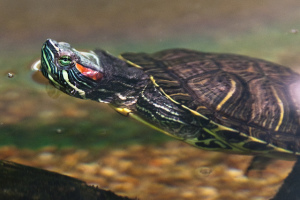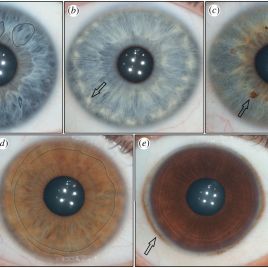
The red-eared slider, identifiable by the marking on the side of the face and neck, is native to the United States of America. (Image credit: Steven Depolo)
The Red-eared slider, a species of turtle, is able to survive months of low oxygen, without apparent damage to the brain tissue. Researchers believe they have now found the secret to this ability in the mitochondria of the brain cells.
The mitochondria, where the respiration and energy processes of the brain take place, of Red-eared sliders are able to remodel themselves to be better suited for neuroprotection.
Researchers examined brain tissues isolated from turtles which had been exposed to either two weeks of of anoxia or normal-oxygen levels.
Original research paper published in Biology Letters on January 13, 2015.
Names and affiliations of selected authors

